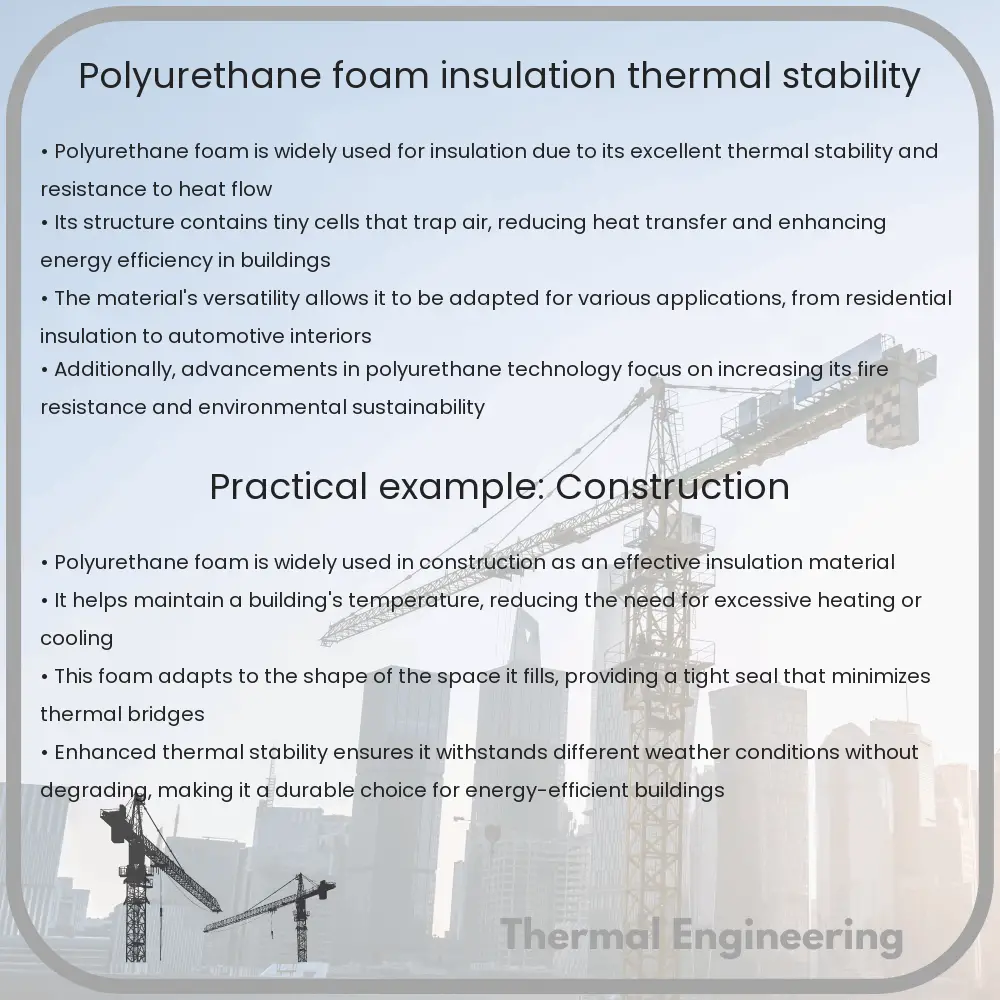Learn about polyurethane foam’s insulation properties, thermal stability, and versatile applications in construction and manufacturing.

Understanding Polyurethane Foam: Insulation and Thermal Stability
Polyurethane foam is a versatile material widely used in the construction and manufacturing industries due to its excellent insulation properties and thermal stability. This material is a polymer composed of organic units joined by carbamate (urethane) links, and it can be flexible or rigid, making it suitable for a wide range of applications. In this article, we will explore the properties of polyurethane foam that make it an exceptional insulator and its behavior under various temperature conditions.
Insulation Properties of Polyurethane Foam
Polyurethane foam is highly valued for its insulation capabilities. It works by trapping gas in its cellular structure, which reduces the amount of heat transfer between materials or environments. Here are some key points regarding its insulation properties:
- High R-value: Polyurethane foam has a high thermal resistance (R-value), which measures an insulation material’s ability to resist heat flow. The higher the R-value, the better the insulation performance. Polyurethane foam often exhibits R-values ranging from 5.5 to 6.5 per inch of thickness.
- Air sealing: Due to its expansive nature, polyurethane foam effectively seals gaps and cracks in building envelopes, minimizing air leaks and improving overall energy efficiency.
- Moisture resistance: Closed-cell polyurethane foam provides excellent moisture resistance, thereby reducing the risk of mold growth and water damage within insulated spaces.
Thermal Stability of Polyurethane Foam
The thermal stability of a material refers to its ability to maintain its properties at high or low temperatures. Polyurethane foam exhibits good thermal stability within a specific temperature range, which is crucial for many applications, particularly in building and construction. Below are important aspects of its thermal behavior:
- Temperature range: Typically, polyurethane foam can withstand temperatures from -60°C to about 100°C. However, variations exist depending on the formulation and the presence of flame retardants or other additives.
- Thermal degradation: When exposed to temperatures above its stability range, polyurethane foam may degrade, leading to a loss of mechanical properties and structural integrity. This degradation often releases gases and can contribute to the material’s flammability.
- Flammability: Polyurethane foam is generally flammable unless treated with fire retardants. In the presence of fire, it can release toxic gases, making fire safety a crucial consideration in applications involving polyurethane foam.
Applications of Polyurethane Foam
Thanks to its insulating properties and thermal stability, polyurethane foam is used in various applications:
- Building insulation: Used for insulating walls, roofs, and floors, polyurethane foam helps reduce energy consumption in heating and cooling systems, leading to enhanced comfort and lower utility bills.
- Refrigeration: Polyurethane foam is critical in the insulation of refrigerators and freezers, helping to maintain the necessary low temperatures while minimizing energy use.
- Automotive: In vehicles, polyurethane foam contributes to thermal and acoustic insulation, improving passenger comfort and reducing external noise.
In conclusion, polyurethane foam is a highly effective insulation material with substantial benefits in thermal management and energy efficiency. Its versatile properties allow for widespread use across various industries, making it a key component in modern manufacturing and construction processes. Understanding the material’s insulation ability and thermal limits helps in optimizing its application and enhancing safety measures where needed.